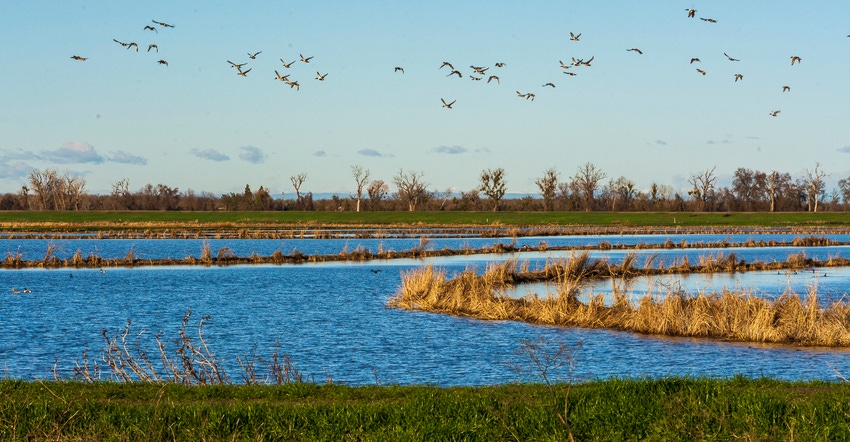
A partnership between the California Rice Commission (CRC) and state Department of Water Resources (DWR) seeks to help provide waterbird habitat by incentivizing rice field flooding from November through January.
The program has specific rules for growers they’ll need to consider immediately following harvest.
Water for the program must come from groundwater wells; no surface water is allowed under the program. To do this, growers can bid to have their pumping costs covered. Bids must be made to the California Ricelands Waterbird Foundation. Bidding runs from Sept. 8 through Sept. 20 at 5 p.m.
Notifications of successful bids will be made by Oct. 4.
The program is being funded through an $8 million drought relief waterbird program. It seeks to create winter bird habitat for migratory birds.
Luke Matthews, wildlife programs manager for the CRC, says the requirement to use groundwater to flood rice fields considers concerns surrounding aquifer sustainability in the Sacramento Valley during a period of epic drought.
"We're being very cognizant of the water situation," he said.
Growers without groundwater wells may want to inquire with their water districts to see if they are willing to use their wells and apply for the program, Matthews said.
Growers must abide by the following rules to comply with the program:
Growers are allowed to perform light tillage only in fields to be eligible. Waste grain is an important food source for waterfowl and deep tillage can bury a significant amount of grain left after harvest. Heavy tillage is not allowed under the program. Under the program, acceptable post-harvest treatments include bale, burn, chop, no treatment, roll, single disc or chisel pass, and stomp.
Flooding will take place Nov. 1 through Jan. 31.
Growers must maintain water depths from 2-8 inches.
According to Matthews, the idea behind the water depths is to flood up the fields, then allow the water to drain into the soil or evaporate by the end of the season, rather than store the water and drain it to the rivers. The goal is to allow as much water as possible to leach back into the aquifers.
Compliance will be monitored by the California Ricelands Waterbird Foundation, a non-profit organization.
Areas within a five-mile radius of Sacramento International Airport and the airport at Beale Air Force Base are not eligible for the program.
Program information and application is available online.
For more information on the program, contact Luke Matthews with the CRC at [email protected], or (916) 607-8988.
About the Author(s)
You May Also Like






